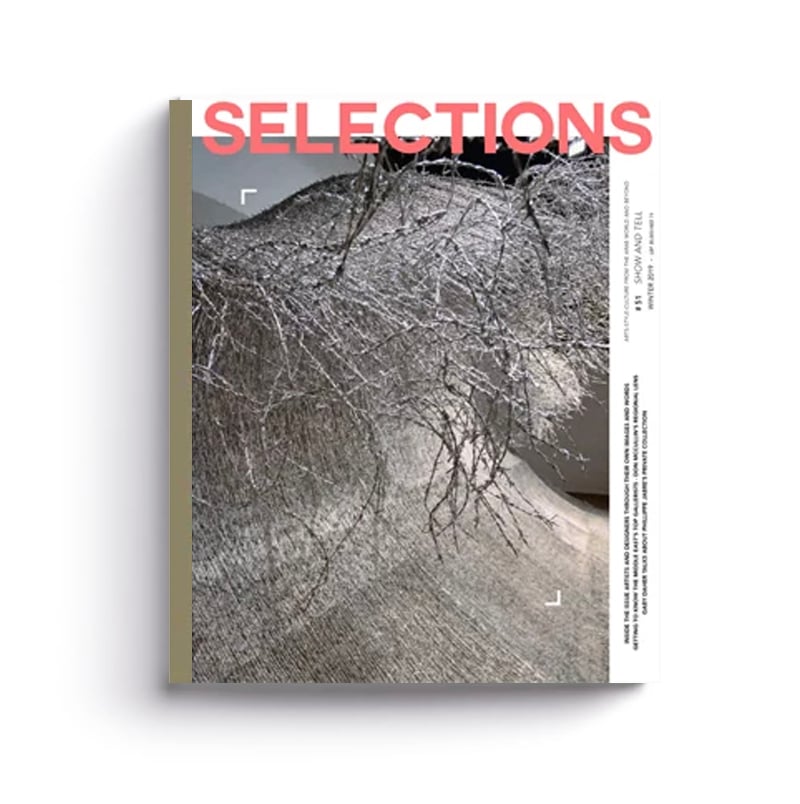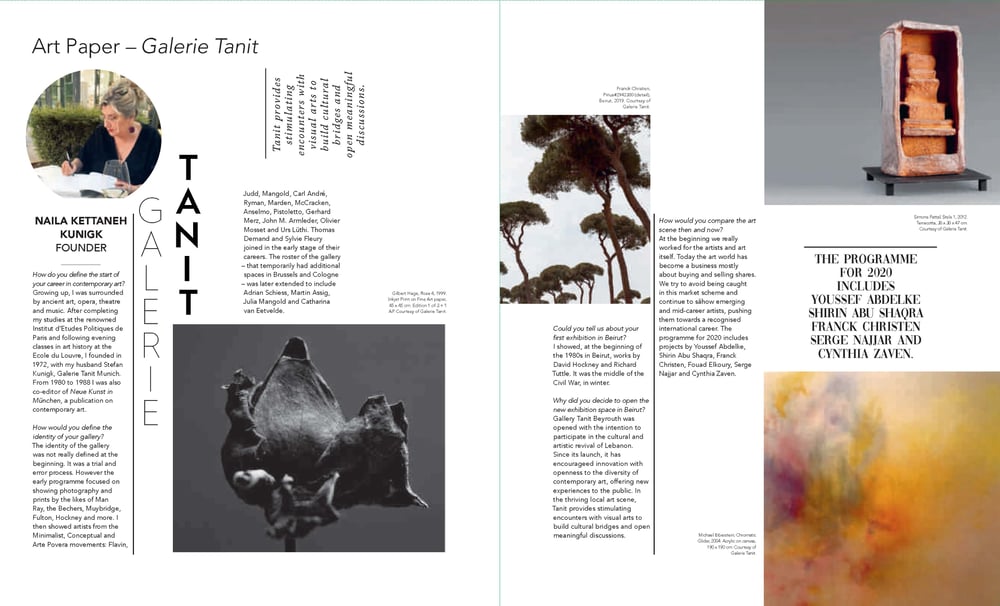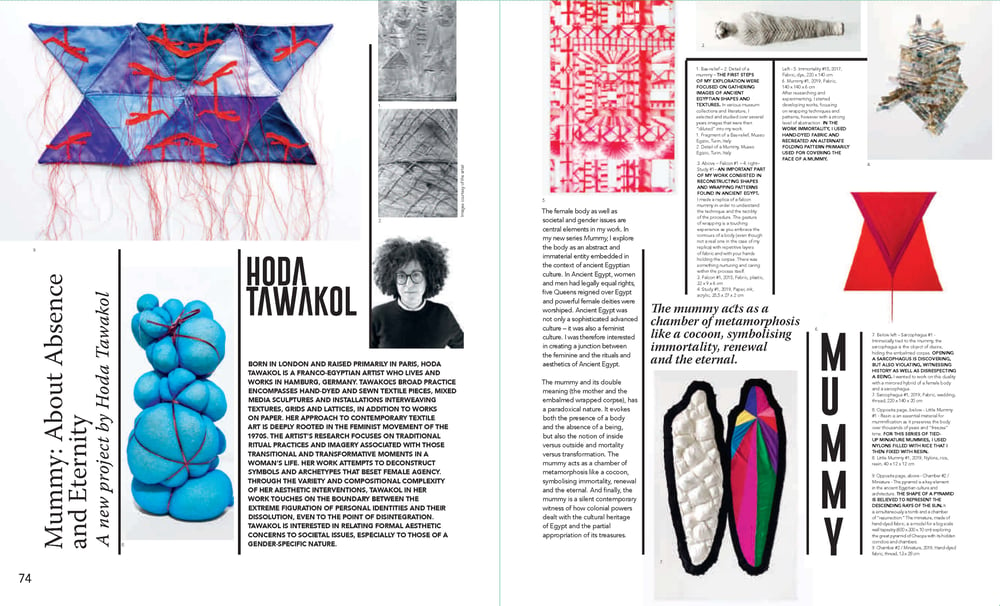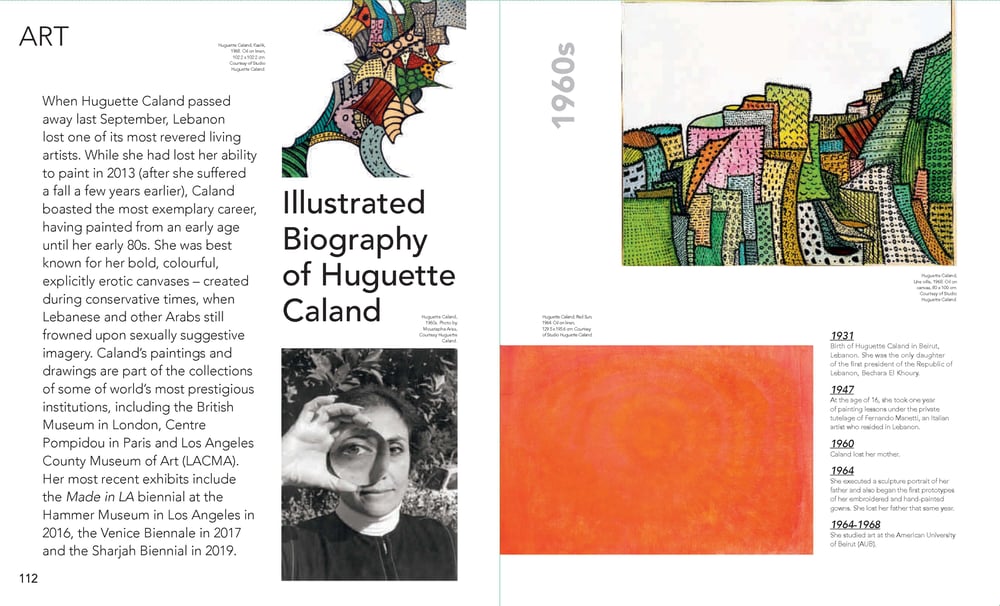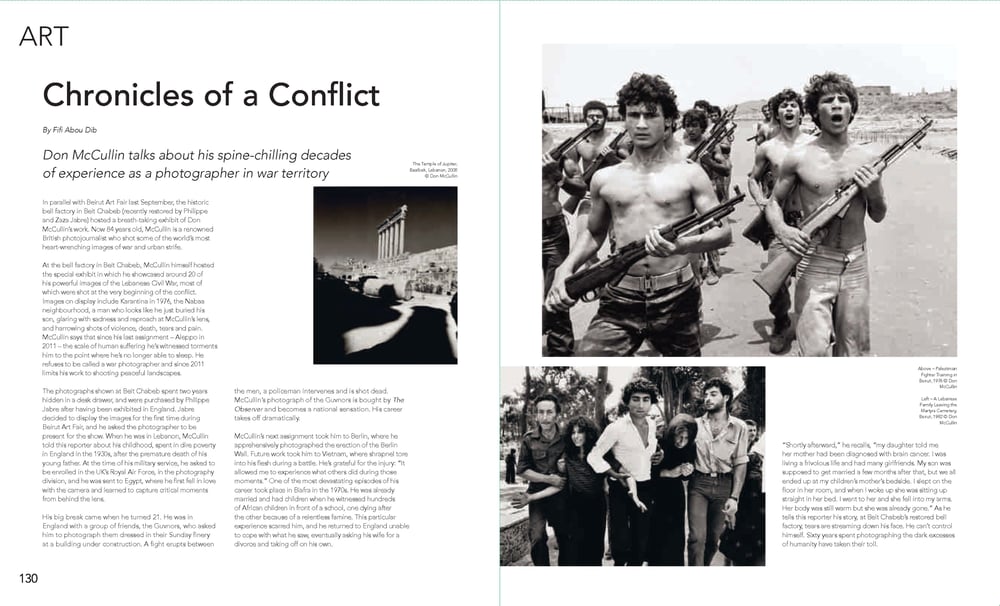Show And Tell #51
$20.00
It’s been an active trimester in the news, particularly in Lebanon, and the art world had the sensitivity to pick up on the emotional side of the dramatic events. Since every story has more than one way to tell it, in this issue of Selections we’ve given the floor to our contributors and what they want to share with our audience. Taking inspiration from a format that is getting more and more popular, such as TED Talks and Pecha Kucha, our speakers share their knowledge through a visual narration, building the story by using the power of the images they chose. This new issue has been challenging to put together, so I would like to thank every single participant for having dedicated such time and effort in sharing with us their thoughts in this manner. Here’s a personal thought for every person involved.
Lyne Sneige
I met Lyne Sneige during Beirut Art Fair in September 2019. At every encounter during the five-day pr ogramme, we talked about everything and nothing – it felt like I’d known her forever. Sneige is the director of the Arts and Culture programme at the Middle East Institute in Washington, DC.
Basel Dalloul
Basel Dalloul’s personal stories with the artists is like a novel: one of his several hats is being director of the Ramzi and Saeda Dalloul Art Foundation, named after his parents, who have been collecting Arab art to form a diverse and impeccable collection. Since he started dedicating his time to the foundation, archiving and organising have been his main objectives. The foundation holds endless stories, and the history of our region is told through its artworks.
Sadik Alfraji
For the opening of the Venice Biennale in 2017, Rima, Yasmina and myself decided to make paper boats and leave them beside our favourite works. At that time, Alfraji was presenting Ali’s Boat, an animation inspired by a letter given to him by his young nephew in Baghdad, wishing that his letter and his drawing of a boat would carry him away from Iraq to the Netherlands, where his uncle lived. Of course, a paper boat was left beside that work too. A few days later, Alfraji posted a picture on social media asking for the author of those boats. And this is how we met Alfraji. Ever since, he’s been part of Selections’ family, contributing to past issues. I even have a sketch he has done on a scrap sheet of paper when I interviewed him once about a work he exhibited in Sharjah that I have framed on top of my desk. It’s those spontaneous drawings that hold a heavy load of wonderful memories.
Rami El-Nimer
“His collection has grown to become a commemoration of resilience against a modern erasure of memory and the distortion of identity,” states Rami El-Nimer’s biography. Collecting is preserving and every foundation has its aim. There’s a lot of unsaid in art, sometimes complex layers that you’re unable to see at first. Born in Palestine, El-Nimer has aimed to preserve memories of his hometown. His collection is nestled in the heart of Beirut, where also holds other events.
Hady Sy
If you look at pictures of the Lebanese Revolution that started on October 17, you’re sure to see Hady Sy’s work The Wall of Hope, standing proud in Downtown Beirut, breaking walls for a better future. His work is powerful and packed with messages to the world. He is as vocal with his work as he is in person and firmly defends his point of view. This great man doesn’t fear wearing his heart on his sleeve.
Joanna Chevalier
This year, Beirut Art Fair brought Joanna Chevalier back to her hometown as artistic director of the fair. She’s an active lady who travels around the world and possesses a keen eye to spot interesting artists on the rise and follow up with more established ones. When I bumped into her at Art Basel in June 2019, she gave me a list of must-sees at that great fair.
Hanaa Malallah
Hanaa Malallah was one of the first artists to submit a photograph to Selections Cultural Narratives, a platform we created a few years ago to map and share Arab art with the world through a travelling show of artworks submitted by various artists. A deep black background serves as a frame for her arm, on which she has tattooed her numerical signature as part of her ruination body of work, each number corresponding to a letter based on Abjad numerals, in which the 28 letters of the Arabic alphabet are assigned numerical values.
Hoda Tawakol
I met Hoda Tawakol during her show When the Dates Turn Red at Gallery Isabelle van den Eynde in Dubai in 2018. I was touched by her work with fabric and how she manipulates textiles to tell her story.
Zineb Sedira
I met Zineb Sedira at the Third Line gallery in Dubai. I have been attentively following her work and am inspired by her way of approaching identity, immigration and travel. The way she relates to a topic is personal and autobiographical, so you feel like you know her quite well without particularly knowing her.
Kazim Rashid
We have friends and we have virtual friends. Kazim Rashid has become the latter. How magnificent is it for people in two diferent countries to meet over paper rather than coffee to put together a presentation? Make sure to see Rashid’s film premiere Nothing Looks The Same at Night – mentioned in his presentation for this issue – at Third Line Dubai, as he expresses his fascination with the hours after dark.
Julia Ibbini
Patience is what first comes to my mind when I see Julia Ibbinis’ work. Only she can see what the final object will look like by obsessively repeating an intricate cut-out shape. At a time when mass production and speed are the top criteria in the design and art industries, she says “It is the flaws that come with the human hand that produce the beautiful end result.”
Clara Carvajal
Clara Carvajal is a Spanish artist who spent a few months in Beirut in 2019 with the aim of digging deeper into the social Lebanese archetypes through archival images. Thanks to her project and to a random encounter on a small Greek island, I got to know her much more and contextualised her research while looking at her body of work. At her studio in Madrid, I was lucky to see the progress of her carving her stamp-like interpretation of the images into solid wood.
Saleh Barakat
Never will you be without a good conversation while Saleh Barakat is around. His knowledge of art is shared with whomever is interested to listen, and his growing dedication to it has resulted in two iconic art spaces in Beirut, with his passion of wanting to create a white cube gallery space in the heart of the city to spread local talent.
Milia Maroun
I remember saving up to buy my first pair of leather golden boots, which Milia Maroun had created for her fashion show in 2012. I still have them and wear them with a lot of care. You can spot Maroun by looking out for her wild curly silver hair and her stylish wear – most notably her latest Kimbaya creation born of a fusion of cultures.
Christine Tohme
Passionate and dedicated, Christine Tohme is always surrounded by people, discussing art, debating subjects, pushing the art scene to grow. And with that, she put it into practice and launched a larger version of her personal way of practicing art by hosting Home Works, about which she gives us a heads-up in this issue. She also details her struggle to k eep Home Works going with the Revolution happening in Lebanon, at a time when it is most needed.
